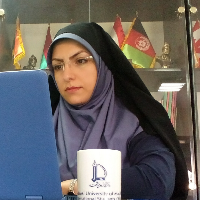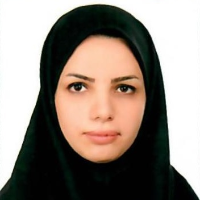Lexical binaries in Ferdowsi’s Shahname and their use in teaching Farsi
The significance of teaching language has motivated various studies in which many procedures have been suggested like applying literature in language teaching. Most of these studies have focused on cultural issues and the direct use or rewriting of literary texts. Yet, this study aimed to use the language framework applied in these texts to produce educational material. The concern of this study was to observe which literary text could provide a suitable pattern for language teaching and what features they should have to ease the learning process. The authenticity and comprehensibility are the first factors suggested. Accordingly, Ferdowsi’s Shahname was selected for analysis as its authenticity and validity and its effective role in maintaining Farsi. In comparison to other texts, it is much older and its language is still comprehensible. Also, it seems that by investigating lexical combinations in Shahname, the way it preserves the lexis can be shown. This descriptive-analytic investigation of lexical relations in the statistical sample shows about 40% of the lexes have dual combinations, half of which are excluded from the general description of collocations. Therefore, the phrase “binary lexes” was suggested here. Additionally, about 70% of binary combinations are meaningful types, this means that the reader is dealing with a great number of binary lexes in the text and reader has tried to understand the words and content by activating his former knowledge about lexes. This feature can help design educational material for language teaching.New perspectives and attitudes toward teaching language and its skills have led to the proposal of new challenges and approaches. Using literature in language teaching is just one of these approaches and based on this theory, literary language with all its special features attracts learners in addition to providing the cultural background of the language, it helps the learner understand language on multiple semantic levels while it also increases their linguistic awareness, which in turn increases their language proficiency and ability in interpreting sentences (Lazar, 1993).Various studies have been conducted on the use of literature in teaching Farsi, which often focuses on the function of literature in transmitting cultural matters, however, some have also examined the impact of literature on enhancing the learners’ language understanding and proficiency. The aim of this study was to investigate the use of literature as context and framework for teaching educational content, which has been the focus of few studies based on the researchers’ knowledge.For this matter, it was required to refer to authentic and reliable texts whose language was also meaningful for the audience (Mishan, 2005; Tomlinson, 2011). With this hypothesis that Ferdowsi’s Shahnameh has had a unique role in the survival and enhancement of Farsi, and it also holds an active, reliable and authentic language, in this study we tried to investigate one of its linguistic features in language teaching. As learning vocabulary is a significant step in all major approaches (Bottom-up approach, Top-down approach, Interactive approach) in language teaching and various solutions have been suggested to ease the process (like lexical network, collocations), it seems that investigating lexical relations in Shahnameh could also be a good framework and contribute to designing educational material.For this purpose, after reviewing the related studies and background as well as recognizing the theoretical foundations, parts of the Shahnameh (Volume 1 through 5) were selected randomly. In the descriptive-analytical method, the lexical relations of meaning (reckoning, confrontation, contradiction, proportion and association), structural (spatial and syntactic), and phonetic in all terms were extracted and categorized. The reliability of the data was verified by a group of graduates and PhD students in the Persian language and literature.Results showed that lexical relations in Shahnameh show that there is a dual link (beyond the definition of the collocation) in a vast volume of text (nearly half of it), which along with other lexical relations places almost the whole text within a network as there are no words left aside without having any connection with other words. This feature makes the language of the text available and understandable to the reader. The authors proposed the term “lexical binaries” and believe that this feature could be used to develop Persian language teaching resources and to facilitate the learning of learners.
- حق عضویت دریافتی صرف حمایت از نشریات عضو و نگهداری، تکمیل و توسعه مگیران میشود.
- پرداخت حق اشتراک و دانلود مقالات اجازه بازنشر آن در سایر رسانههای چاپی و دیجیتال را به کاربر نمیدهد.




